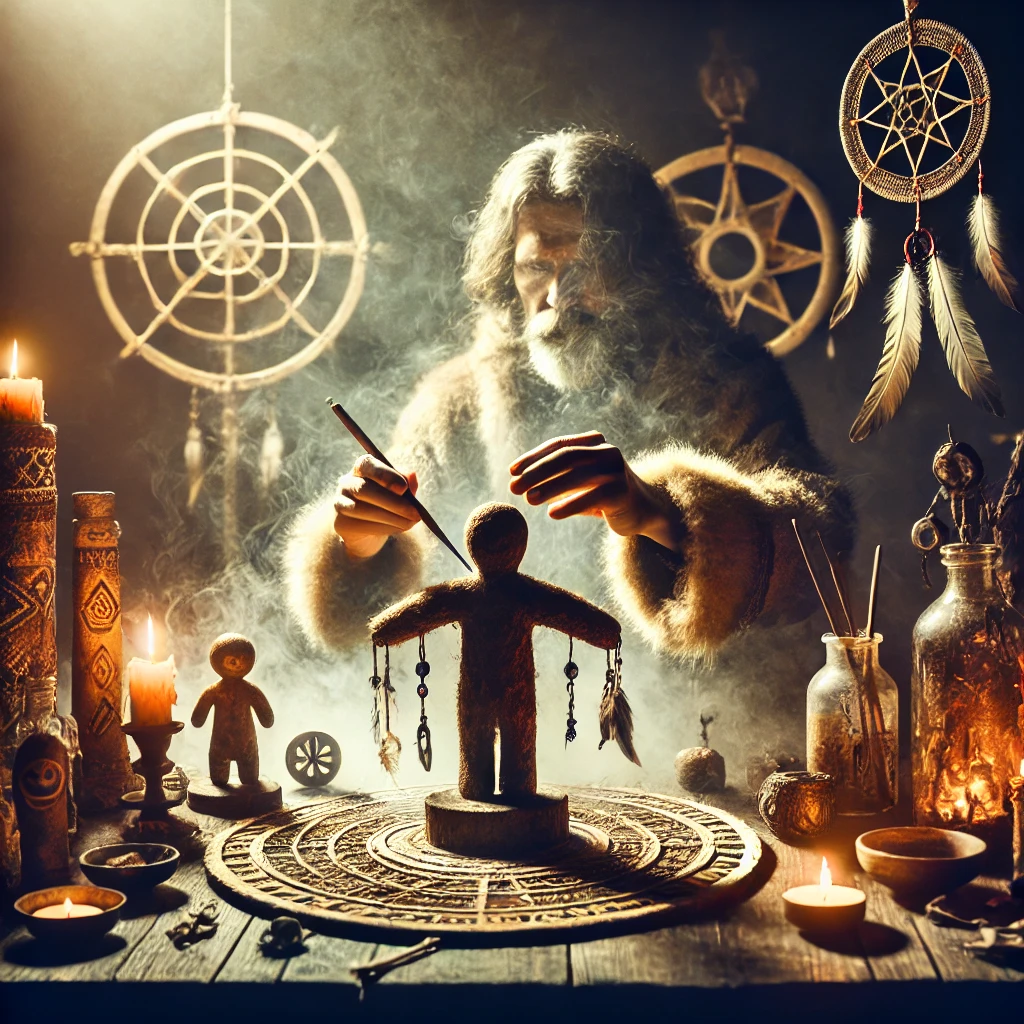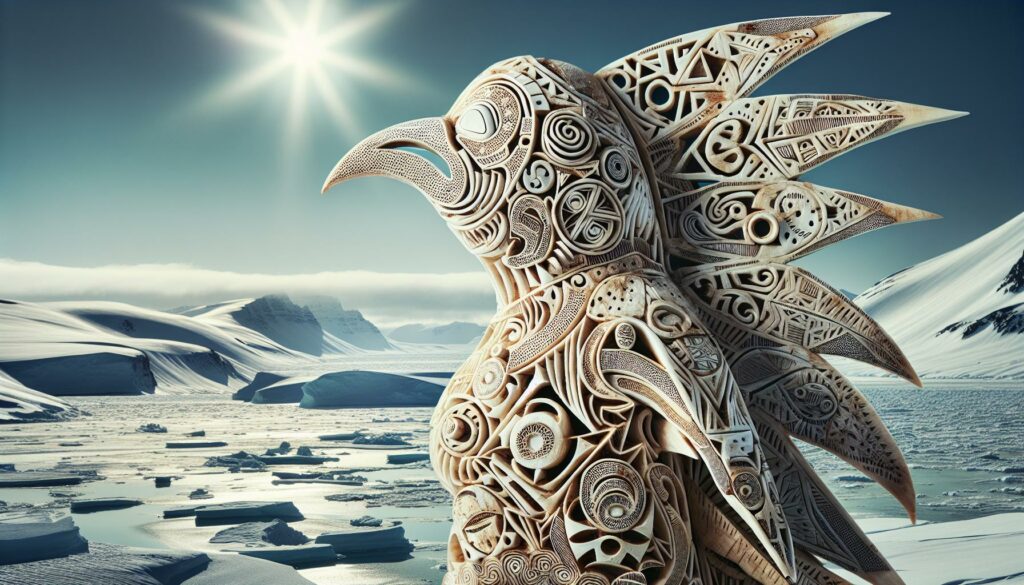Discovering the enigmatic world of Tupilak has been a fascinating journey for me. These traditional Inuit sculptures hold deep cultural significance, often believed to possess protective or vengeful powers. Each Tupilak is meticulously crafted, embodying the artisans’ connection to nature and spirituality.


Delving into their origins, I found that Tupilaks were historically created to safeguard communities or, conversely, to seek revenge against adversaries. The intricate designs and symbolism behind each piece offer a unique glimpse into Inuit beliefs and artistic expression. Understanding Tupilak not only enriches our appreciation of indigenous art but also highlights the profound narratives woven into their creation.


Origin And History
Tupilak originates from the Inuit communities in Greenland, Canada, and parts of Alaska. Historically, these sculptures served dual purposes: protection and vengeance. Crafted by shamans, Tupilaks were believed to embody spirits that could guard the community or seek retribution against enemies. The creation process involved meticulous selection of materials, including bone, ivory, and stone, reflecting the harsh Arctic environment. Each Tupilak features intricate carvings and symbols representing specific powers or intentions. Oral traditions document that Tupilaks played a crucial role in Inuit spirituality, bridging the physical and spiritual realms. Over the centuries, the artistry of Tupilak has been preserved and adapted, maintaining its significance in contemporary Inuit culture.
Cultural Significance

Tupilaks embody deep cultural and spiritual values within Inuit communities. They serve as tangible connections to ancestral beliefs and practices.
Role In Inuit Traditions
Tupilaks functioned as tools for shamans, or angakok, to protect communities or seek vengeance. Crafted during extended private rituals, shamans used materials like bone, walrus tusks, and caribou antlers. They invoked spirits through chants, binding the materials with their body fluids. Each tupilak was infused with a specific spirit and released into the sea to target enemies, causing illness or misfortune. This practice reinforced the shaman’s role as an intermediary between the spiritual and physical worlds, ensuring the community’s safety and cohesion.[3][5]
Symbolism And Meaning
Every tupilak symbolises a unique intention or power, reflected in its intricate carvings and chosen materials. Organic elements like sperm whale teeth represent strength, while human remains signify potent spiritual force. The craftsmanship embodies the Inuit’s respect for nature and their understanding of the spiritual realm. Tupilaks also serve as reminders of the delicate balance between protection and retribution in Inuit spirituality, highlighting the interconnectedness of their cultural practices and the natural environment.
Design And Construction

I explore the intricate processes involved in creating a Tupilak, deeply rooted in Inuit traditions. The design combines natural elements with spiritual intentions to craft a powerful spirit being.
Materials Used
I utilise traditional materials such as bones, skin, hair, and other body parts from both animals and humans. These components are essential for assembling the Tupilak effectively.
Artistic Techniques
Initially, Tupilaks served a spiritual purpose rather than artistic expression. However, when Greenlandic explorers arrived, locals began carving Tupilak representations from bone and wood. These carvings became the first Greenlandic merchandise.
Tupilak In Contemporary Culture
Tupilaks have transformed significantly, reflecting modern Inuit culture and artistic expression.
Modern Interpretations
- From Curses to Art: Originally crafted by shamans as protective talismans or to cast curses, Tupilaks now serve as artistic expressions. They are produced for trade and as cultural artifacts, showcasing the artist’s vision and heritage[^1][^2][^5].
- Diverse Materials and Designs: Contemporary Tupilaks utilize materials like narwhal and walrus tusk, wood, and reindeer antler. Designs feature fantastical creatures with combined animal parts, highlighting the belief in the interconnectedness of all life forms[^1][^2][^5].
Influence On Art And Media
Tupilaks inspire various art forms and media globally. Artists incorporate Tupilak motifs in paintings, sculptures, and digital art, blending traditional Inuit elements with modern styles. In film and literature, Tupilaks appear as symbols of cultural heritage and mystical power, enhancing narratives with their rich history. Exhibitions in museums and galleries showcase Tupilaks, educating audiences about Inuit culture and promoting cultural preservation. Additionally, Tupilaks influence fashion designers who integrate traditional designs into contemporary clothing and accessories, bridging the gap between past and present.
[^1]: Reference 1
[^2]: Reference 2
Collecting And Preserving Tupilaks
Collecting Tupilaks requires understanding their cultural significance and ethical considerations. I approach this process with respect for Inuit traditions and the spiritual meanings embedded in each sculpture.
Acquisition Methods
I acquire Tupilaks through reputable sources to ensure authenticity and legality. These sources include:
- Licensed Art Dealers: Verified dealers who specialise in Inuit art.
- Cultural Exhibitions: Museums and galleries that feature traditional Tupilaks.
- Direct from Inuit Communities: Establishing relationships with Inuit artisans and communities.
Ethical Considerations
Respecting the cultural heritage of Tupilaks is paramount. I adhere to the following guidelines:
- Legal Compliance: Ensuring all acquisitions comply with international laws, such as CITES.
- Cultural Sensitivity: Avoiding the purchase of Tupilaks that may hold specific spiritual significance to a community.
- Authenticity Verification: Confirming the origin and craftsmanship to prevent the trade of replicas or misrepresented artifacts.
Preservation Techniques
Preserving Tupilaks involves maintaining their structural integrity and cultural value. I implement these techniques:
- Climate Control: Storing Tupilaks in environments with stable temperature and humidity levels to prevent deterioration.
- Protective Display Cases: Using UV-resistant glass to shield Tupilaks from harmful light exposure.
- Regular Maintenance: Inspecting for signs of wear or damage and performing necessary conservation treatments.
Documentation and Provenance
Maintaining accurate records is essential for the preservation and provenance of Tupilaks. I ensure the following:
- Detailed Provenance Records: Documenting the history of each Tupilak’s ownership and origin.
- High-Quality Photography: Capturing detailed images for reference and documentation purposes.
- Descriptive Catalogues: Listing materials, dimensions, and unique features to aid in identification and preservation efforts.
Challenges in Preservation
Preserving Tupilaks presents several challenges:
- Material Degradation: Organic materials like bone and sinew are susceptible to decay over time.
- Environmental Factors: Exposure to fluctuating temperatures and humidity can damage delicate structures.
- Ethical Constraints: Navigating the balance between preservation and respecting the cultural significance of Tupilaks.
Preservation Best Practices
Adhering to best practices ensures the longevity of Tupilaks:
- Professional Conservation Services: Collaborating with experts in artifact preservation.
- Controlled Environment: Maintaining consistent storage conditions to minimize environmental impact.
- Education and Training: Staying informed about the latest preservation techniques and cultural protocols.
Case Studies
| Tupilak Collection | Preservation Method | Outcome |
|---|---|---|
| Arctic Heritage Museum | Climate-controlled display | Minimal deterioration over 10 years |
| Private Collector | Regular maintenance and professional conservation | Enhanced structural stability and preserved details |
| Inuit Community Exhibition | Ethical sourcing and documentation | Respectful representation and cultural preservation |
By following these practices, I ensure that Tupilaks are collected and preserved with the utmost respect and integrity, honouring their cultural and spiritual importance.
Key Takeaways
- Cultural Significance: Tupilaks are traditional Inuit sculptures deeply rooted in ancestral beliefs, serving as protective talismans or instruments of vengeance.
- Historical Origins: Originating from Inuit communities in Greenland, Canada, and Alaska, Tupilaks were crafted by shamans using materials like bone and ivory to embody spiritual powers.
- Intricate Design and Construction: The meticulous creation of Tupilaks involves selecting organic materials and intricate carvings, reflecting a profound connection to nature and spirituality.
- Contemporary Influence: Today, Tupilaks have evolved into artistic expressions featured in global art forms, media, and fashion, bridging traditional Inuit culture with modern creativity.
- Ethical Collecting and Preservation: Collecting Tupilaks requires respect for their cultural heritage, ensuring authenticity and adhering to ethical practices for their preservation.
- Educational Value: Understanding Tupilaks enhances appreciation of indigenous art and highlights the rich narratives and spiritual beliefs of Inuit communities.
Conclusion
Exploring Tupilak has deepened my appreciation for Inuit artistry and spirituality. These sculptures aren’t just art pieces; they’re powerful symbols of heritage and belief.
Seeing how Tupilaks have evolved while retaining their cultural essence is truly inspiring. They bridge the past and present, honouring traditions while embracing modern expressions.
Preserving Tupilaks ensures that future generations can connect with their roots and understand the profound narratives they embody. It’s a testament to the resilience and creativity of Inuit communities.
Tupilak stands as a remarkable example of how art can serve as a vessel for cultural identity and spiritual meaning. Embracing and respecting these works enriches our understanding of the diverse tapestry of human culture.
Frequently Asked Questions
What is a Tupilak?
A Tupilak is a traditional Inuit sculpture believed to possess protective or vengeful spiritual powers. These carvings are crafted by shamans and embody specific spirits through intricate designs and symbolic materials. Historically, Tupilaks served to safeguard communities or seek revenge against enemies. They are made from natural elements like bone, ivory, and stone, reflecting the creators’ deep connection to nature and spirituality. Today, Tupilaks also represent a rich aspect of Inuit cultural heritage and artistic expression.
Where do Tupilaks originate from?
Tupilaks originate from Inuit communities in Greenland, Canada, and parts of Alaska. These regions have a rich indigenous heritage, and Tupilaks have been integral to their spiritual and cultural practices for centuries. The harsh Arctic environment influences the materials and craftsmanship of Tupilaks, ensuring they are both resilient and symbolically significant. Over time, Tupilaks have evolved, adapting to contemporary Inuit culture while maintaining their traditional roots and meanings.
How are Tupilaks traditionally created?
Traditionally, Tupilaks are crafted by shamans, known as angakok, during extended private rituals. The creation process involves careful selection of materials such as bone, ivory, and stone. Shamans invoke spirits through chants and bind materials with their body fluids to infuse the sculpture with specific powers or intentions. Each Tupilak features intricate carvings and symbols that represent its intended protective or vengeful purpose. The meticulous craftsmanship reflects the artist’s spiritual connection and the significance of the Tupilak within the community.
What materials are used to make Tupilaks?
Tupilaks are made from a variety of natural materials, including bone, ivory, stone, wood, and reindeer antler. Organic elements like sperm whale teeth are used to signify strength, while human remains may represent potent spiritual force. In modern times, artists may also incorporate narwhal tusk and walrus ivory. The selection of materials is crucial, as each element holds specific symbolic meanings and contributes to the Tupilak’s intended power. These materials reflect the Inuit’s respect for nature and their ability to adapt to their Arctic environment.
What purposes did Tupilaks serve historically?
Historically, Tupilaks served dual purposes: they were used to protect Inuit communities and to seek revenge against enemies. Crafted by shamans, these sculptures embodied spirits that could safeguard the community from harm or unleash misfortune on adversaries. Tupilaks played a crucial role in Inuit spirituality, acting as tangible connections to ancestral beliefs and practices. They were integral tools in rituals, helping shamans invoke specific powers to maintain the community’s safety and balance within their environment.
How have Tupilaks evolved in modern Inuit culture?
In modern Inuit culture, Tupilaks have evolved from solely spiritual tools to also being appreciated as artistic expressions. Contemporary Tupilaks incorporate diverse materials like narwhal tusk and reindeer antler, featuring more fantastical and intricate designs. They are displayed in museums and galleries, inspiring various art forms globally and appearing in films and literature. Additionally, traditional Tupilak designs influence modern fashion and design, bridging the gap between past traditions and present creativity while preserving their cultural significance.
How can one acquire authentic Tupilaks?
Authentic Tupilaks can be acquired through licensed art dealers, cultural exhibitions, and directly from Inuit communities. It is essential to ensure that the Tupilak is genuine by verifying its authenticity and sourcing it legally. Purchasing from reputable sources supports Inuit artists and preserves cultural heritage. Avoiding illegal or unethical acquisition is crucial, as Tupilaks hold significant cultural and spiritual value. Engaging with certified galleries and participating in cultural events are reliable ways to obtain authentic Tupilaks ethically.
What are the ethical considerations in collecting Tupilaks?
When collecting Tupilaks, it is important to respect their cultural significance and ensure ethical acquisition. This includes sourcing them from licensed dealers or directly from Inuit communities, verifying authenticity, and complying with legal regulations. Collectors should avoid purchasing from unverified or exploitative sources to prevent the loss of cultural heritage and support respectful practices. Understanding and honoring the spiritual meanings behind Tupilaks is essential, as is contributing to the preservation and appreciation of Inuit traditions.
How are Tupilaks preserved?
Preserving Tupilaks involves climate control, protective display cases, and regular maintenance to maintain their structural integrity and cultural value. Techniques include controlling temperature and humidity to prevent material degradation, using protective glass or cases to shield from physical damage, and employing professional conservation services for restoration when needed. Preservation also involves educating owners about proper care and collaborating with museums or cultural institutions to ensure long-term sustainability. These practices help maintain Tupilaks as valuable cultural artifacts for future generations.
Why are Tupilaks important in Inuit culture?
Tupilaks are vital in Inuit culture as they embody spiritual beliefs and ancestral traditions. They serve as tangible connections to the natural and spiritual world, reflecting the deep relationship between the Inuit people and their environment. Tupilaks represent protection, revenge, and the balance between these forces, highlighting the community’s values and resilience. Additionally, they are a form of artistic expression that preserves and communicates cultural narratives, ensuring that Inuit heritage and practices are honoured and passed down through generations.
Author

Josh Morley holds a Bachelor’s degree in Theology from the Trinity School of Theology and a Diploma in Theology from the Bible College of Wales. His academic journey involved interfaith community projects and supporting international students, experiences that shaped his leadership and reflective skills. Now based in Liverpool, Josh is also the founder of Marketing the Change, a digital agency specializing in web design and marketing.
View all posts





